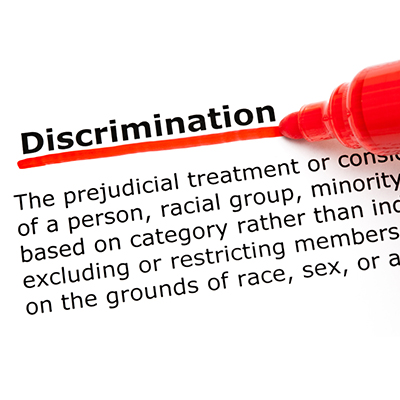
The Act identifies nine protected characteristics which must not be discriminated against, including disability. A person is considered to have a disability if they have a physical or mental impairment which has a substantial long-term adverse effect on their ability to carry out normal day-to-day activities.
ACAS has recently published new guidance which will be of use to managers and HR professionals in assessing whether someone has a disability, judging what reasonable adjustments, if any, should be made if they do and identifying and preventing discrimination from occurring in practice.
Employers need to be aware that disability discrimination takes various forms:
- Direct, either as a result of an employee or job applicant’s disability, an association with someone with a disability or the perception of a disability regardless of whether that perception is factually correct.
- Indirect, as a result of a provision, criterion or practice (PCP) which applies to all employees or job applicants but which actually disadvantages those with a disability, unless the PCP can be objectively justified as being a proportionate means of achieving a legitimate aim (a real business need), with no less discriminatory ways existing to achieve that aim.
- Harassment related to a disability i.e. unwanted conduct which violates the dignity of the employee or job applicant, or creates an intimidating, hostile, degrading, humiliating or offensive environment for them.
- Victimisation where an employee or job applicant suffers a detriment because they have done, or may do, a “protected act”, for example, making allegations of, complaining about, raising a grievance about or giving evidence about discrimination.
- Discrimination arising from disability, where the employee or job applicant is treated less favourably due to something arising out of the disability rather than the disability itself.
- Failure to make reasonable adjustments which remove or minimise the effect of the impairment, allowing the employee to undertake their role, or a job applicant to apply for a role, without being at a disadvantage.
This area of employment law is particularly complex and it is easy for discriminatory practices to occur and even become embedded within an organisation, without any intention or realisation on the part of the employer. However, once highlighted, discriminatory practices not only attract bad publicity and affect staff morale, but can also come with a hefty, uncapped award imposed by the Employment Tribunal or the Court.
The new ACAS guidance gives plenty of thought-provoking examples of discrimination in practice and is available to download here: http://www.acas.org.uk/media/pdf/o/t/Disability-discrimination-key-points-for-the-workplace.pdf






